Ever wondered what it’s like to breathe underwater? That’s exactly what scuba diving lets you do! Using a self-contained breathing apparatus (yep, that’s what SCUBA stands for), divers can explore the underwater world with ease. With a tank of compressed air, a regulator to control airflow, and a buoyancy control device (BCD) to stay perfectly balanced, you’re all set for an underwater adventure.
But before you take the plunge by yourself, you’ll need a scuba certification. That’s where PADI and SSI come in—the two biggest names in the diving world. Whether you’re dreaming of swimming alongside sea turtles or exploring sunken shipwrecks, getting certified is your first step toward making those dreams a reality.
So, what’s the difference between PADI and SSI? Which one is right for you? How can you get your certification? Let’s dive in and find out!
Before we start, here’s a quick overview for easier navigation:
- What is Scuba Diving and why do I need a certification?
- PADI vs. SSI: Overview & differences of the two organizations
- What is the process of obtaining a certificate?
- What are different types of diving certifications?
- FAQ: Frequently asked questions around scuba diving & certifications
What is Scuba Diving and why do I need a certification?
Scuba diving explained
As already mentioned, SCUBA stands for Self-Contained Underwater Breathing Apparatus, which allows you to explore lakes, rivers, quarries, kelp forests, and coral reefs—all while breathing comfortably underwater. This gear gives you the freedom to move weightlessly, making every dive feel like an adventure in zero gravity.
Recreational scuba diving is the most common form, often enjoyed on vacations or as a hobby. Divers explore vibrant reefs, mysterious shipwrecks, and diverse marine ecosystems. Advanced forms include technical, commercial, and scientific diving, but recreational diving is the perfect start for beginners.
Scuba diving allows a profound connection to the underwater world, where you can encounter species like sea turtles, manta rays, and vibrant schools of fish. Divers often describe the experience as meditative and awe-inspiring, a true escape from the everyday.
Scuba diving equipment: A quick overview
Generally, scuba diving equipment is included in the course, especially for beginner or “discover” courses. If not, you can also rent it at the diving center. Only rarely you are required to bring your own gear, usually for advanced courses or guided dives. Here is an overview of the most important equipment:
Mask – Lets you see clearly underwater.
Fins – Help you move efficiently through the water.
Regulator – Delivers air from your tank to breathe.
Tank – Holds the compressed air you breathe while diving.
Buoyancy Control Device (BCD) – Helps you manage buoyancy and stay balanced in the water.
Wetsuit/Drysuit – Keeps you warm and protects against the cold.
Weight Belt – Helps you stay neutrally buoyant.
Snorkel – Allows you to breathe at the surface without using your tank.
Choosing a high-quality diving center usually also means choosing high-quality equipment, which is crucial for safety, comfort and optimal performance.
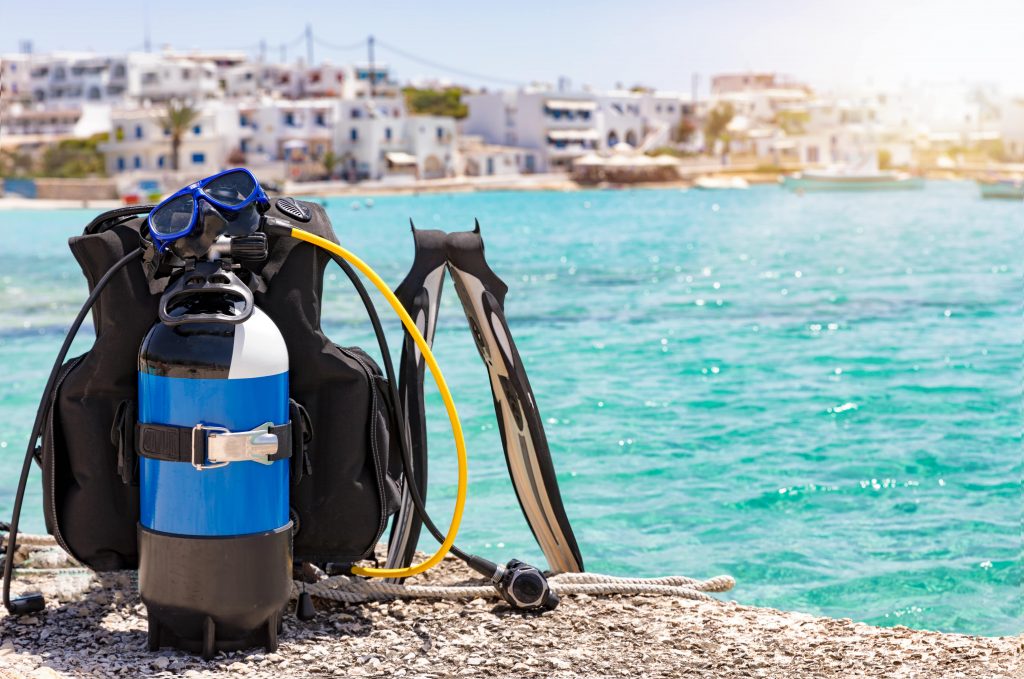
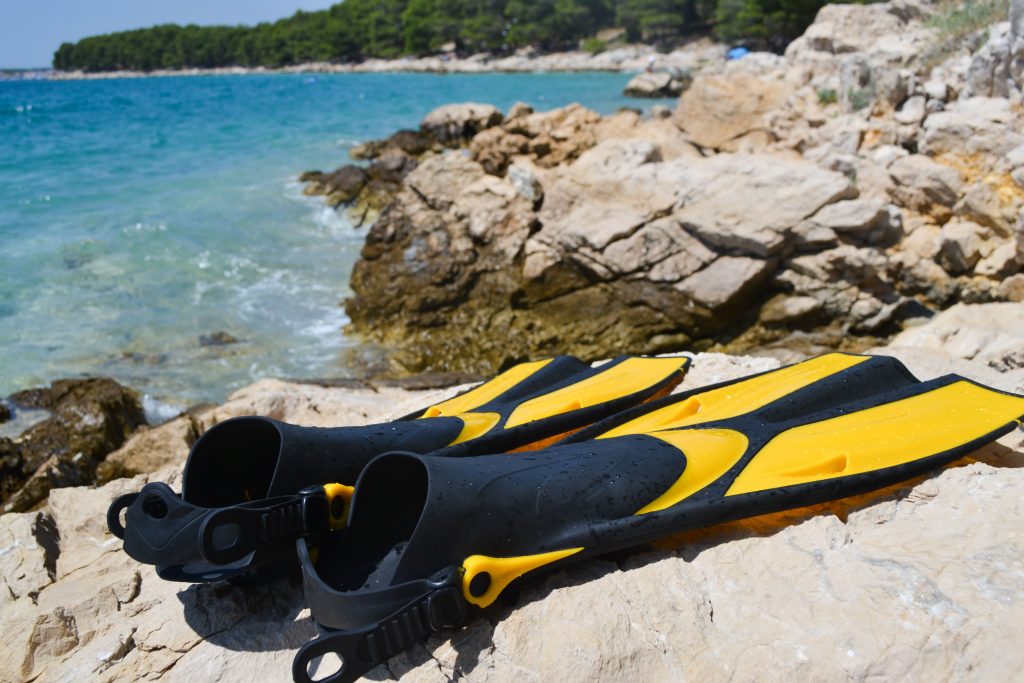
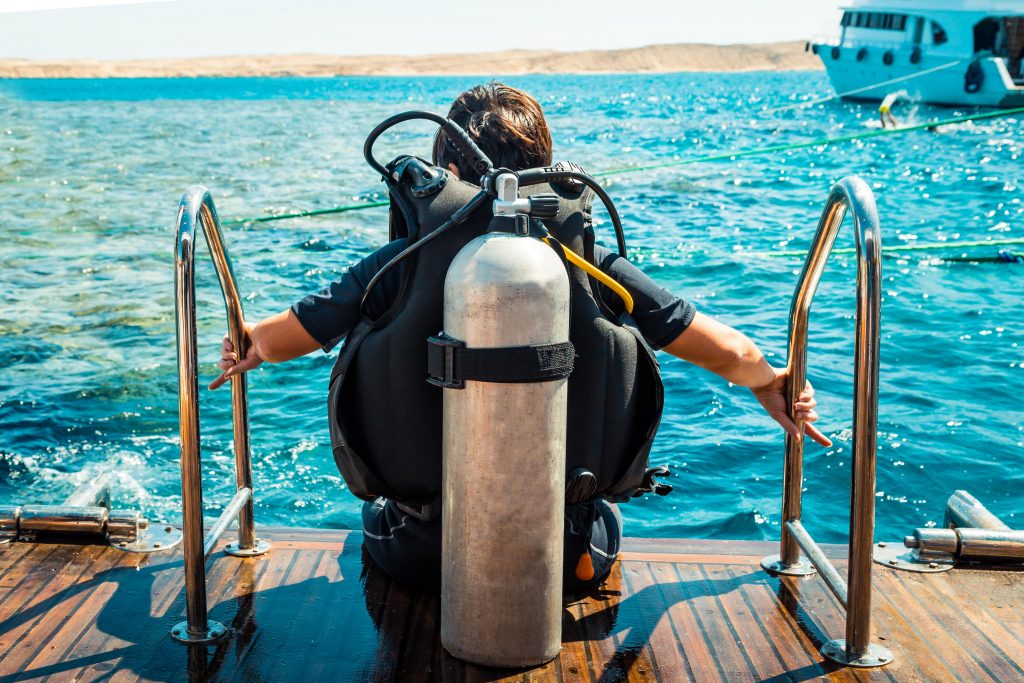
Why you need a certificate for scuba diving
Scuba diving is an incredible adventure, but it comes with risks—ones that proper training helps you avoid. That’s why getting certified isn’t just a formality; it’s essential for your safety. A scuba license teaches you the basics, like how to manage your air supply, avoid decompression sickness, and why you should never hold your breath while ascending.
While you technically can try scuba diving without a license through a “Discover Scuba” class (under close supervision), you won’t be able to rent gear or dive independently without certification. Think of it like driving—sure, no one’s stopping you from sitting in a standing car, but without lessons, things could go very wrong.
Bottom line? A scuba license unlocks a world of underwater wonders while keeping you safe. So, if you’re serious about exploring beneath the waves, it’s time to get certified!
Our Tip: If you do not want to obtain a diving certification and still explore the underwater world, a snorkeling trip might be ideal for you.
PADI vs. SSI: Overview & differences of the two organizations
If you’re looking to get scuba certified, you’ve likely come across PADI (Professional Association of Diving Instructors) and SSI (Scuba Schools International). Both offer high-quality training and are recognized worldwide, but they have distinct approaches to diver education. Let’s dive into the details!
Here an overview of the main differences:
| Feature | PADI | SSI |
| Certification Process | Standardized worldwide | More flexible, can vary |
| Learning Materials | eLearning + physical materials | Digital-first approach |
| Training Style | Instructor-dependent | Dive Center-dependent |
| Certification Recognition | Worldwide | Worldwide (slightly more location-dependent) |
| Cost | Slightly higher | Can be more affordable |
| Continuing Education | Wide range of specialities | Flexible progression system |
PADI: The Global Standard
Founded in 1966, PADI is the world’s most popular scuba diving curriculum, known for its structured, modular approach to training. With a vast network of instructors and dive centers globally, PADI certifications are highly accessible and widely recognized. Instructors can operate independently, offering flexibility but also bearing full responsibility during training.
SSI: The Flexible Alternative
Established in 1970, SSI provides a comprehensive range of diving courses with a focus on flexibility and modern technology. Their digital-first approach includes an app for logging dives, accessing course materials, and displaying certifications. SSI instructors must be affiliated with an SSI dive center, ensuring adherence to the center’s standards and practices.
Key Differences at a Glance
- Teaching Methods: PADI follows a linear, standardized training approach, while SSI offers a more flexible, student-centered experience tailored to individual needs.
- Course Materials: SSI allows free online study for its courses, whereas PADI’s e-learning materials may come at an additional cost.
- Instructor Affiliation: PADI instructors can operate independently of dive centers, offering flexibility but bearing full responsibility during training. In contrast, SSI instructors must be affiliated with an SSI dive center, ensuring adherence to the center’s standards and practices.
- Global Presence: PADI has a larger global reach, making it easier to find PADI-certified dive centers worldwide. SSI is growing rapidly and integrating modern technology into its training programs.
So overall, SSI offers more flexibility in learning, while PADI offers more flexibility for instructors. PADI is more internationally known, while SSI focusses more on technology.
Which One Should You Choose?
Both PADI and SSI offer quality training programs, and their certifications are interchangeable and recognized globally. Your decision may depend on personal preferences, learning style, budget, and the availability of dive centers in your area. Ultimately, both paths lead to the same exciting underwater adventures!
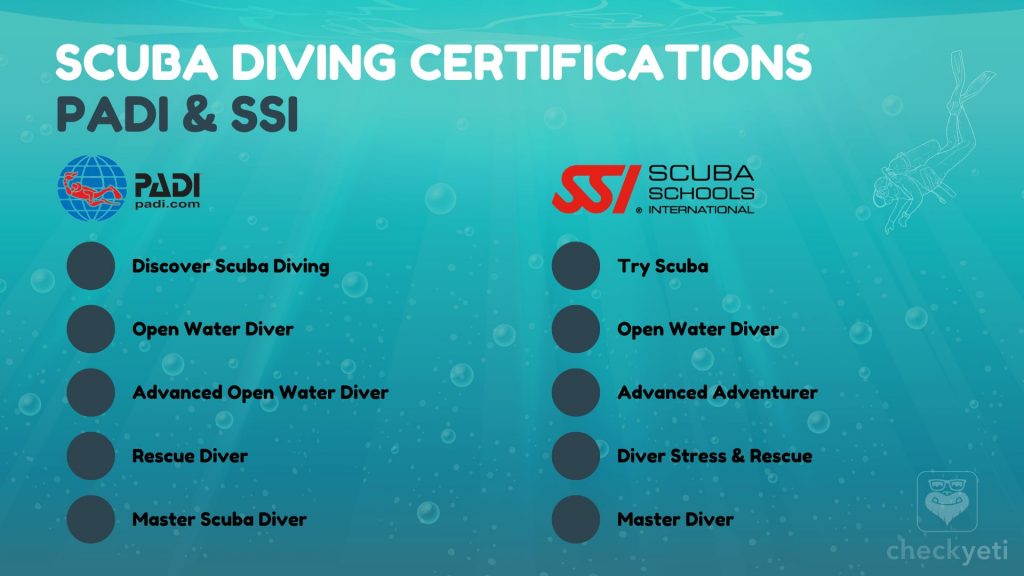
Process & requirements for obtaining a diving certification
As previously mentioned, the process of obtaining a certification varies depending on the organization you choose, as well as the diving center and instructor. However, here is an overview of how it usually works:
Prerequisites & Requirements
- You need to be at least 10 years old (depending on the course and agency; kids’ courses can start from 8)
- Basic swimming skills are a must!
- You should be in good physical health, with no major medical conditions like heart problems, asthma, or recent surgeries. If you’re unsure, a quick medical check-up might be needed.
The Certification Process: Obtaining your licence
The certification process is like a 3-step journey:
- Classroom or Online Learning – You’ll dive into diving theory, like equipment, safety, and dive planning.
- Confined Water (Pool) Training – Here, you’ll practice the basic skills in a safe, controlled environment.
- Open Water Dives – The real deal! You’ll head out to the ocean for supervised dives to apply everything you’ve learned.
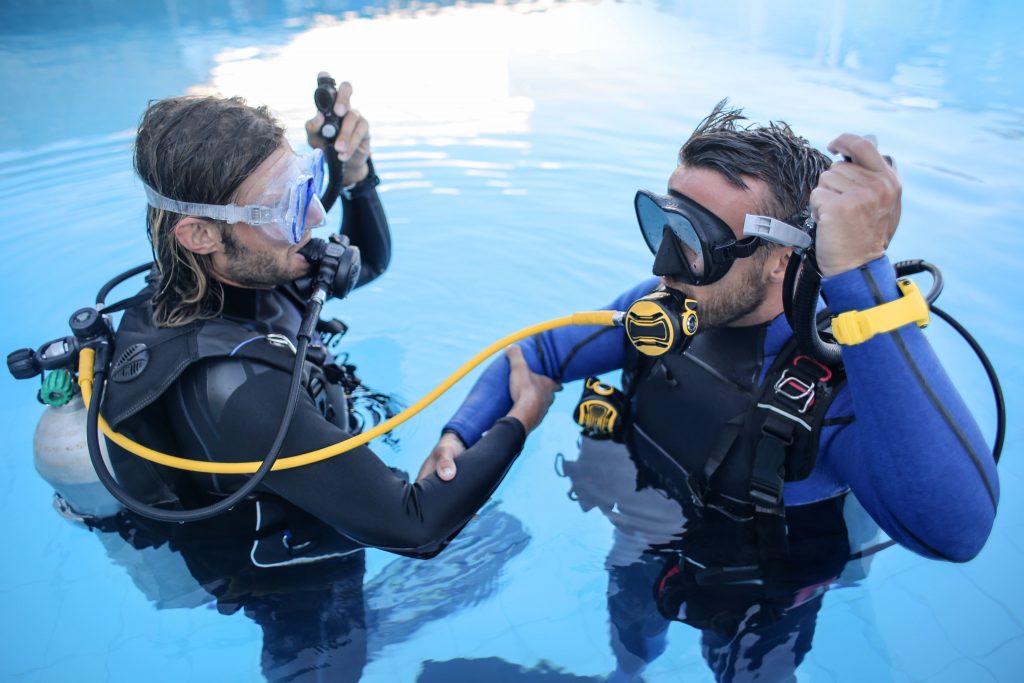
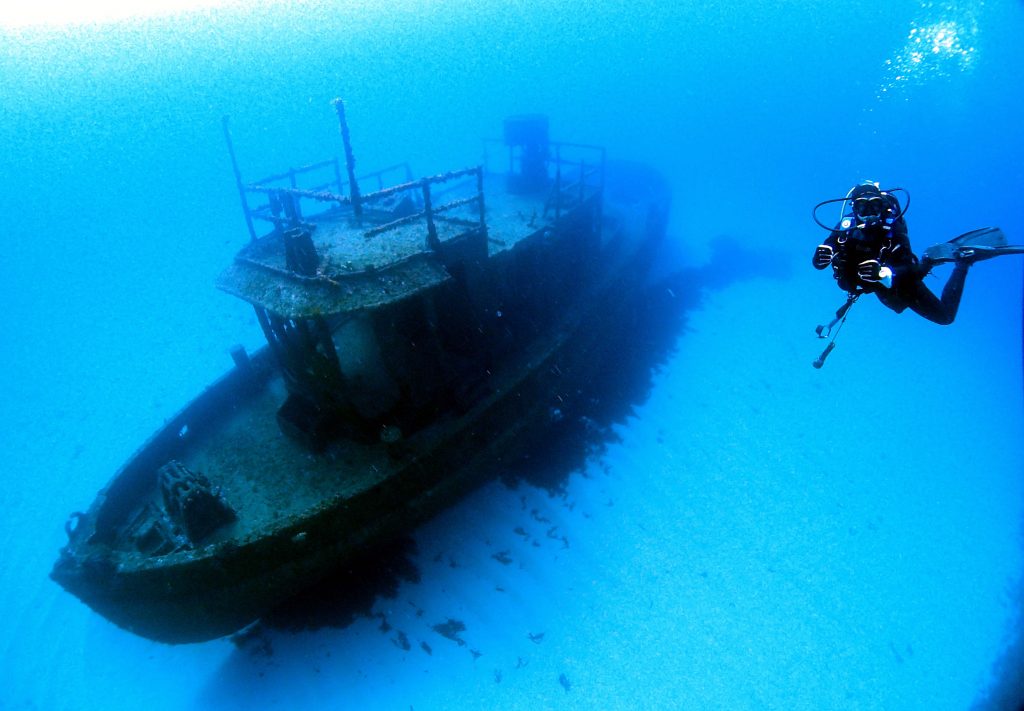
If you’re not ready for the full course yet, many places offer a “Try Diving” experience where you can give it a go without getting certified.
What You’ll Learn
You’ll need to understand diving theory (like gas management and decompression) and master practical skills, including buoyancy control, underwater navigation and emergency procedures.
Different types of diving certifications
As mentioned, PADI and SSI are very similar, so here is an overview of PADI certifications you can get and SSI equivalents
| Certification Level | PADI | SSI Equivalent | Description |
| Beginner Courses | Bubblemaker (for kids) | Scuba Ranger (for kids) | A fun, safe way for kids to experience scuba diving in shallow water. Ages 8+ can try breathing underwater! |
| Discover Scuba Diving | Try Scuba | A beginner-friendly introduction to diving for adults and older kids. Experience diving without certification! | |
| Entry-Level Certification | Open Water Diver | Open Water Diver | The foundational course where you learn the basics of scuba diving and are certified to dive up to 60 feet (18m) with a buddy. |
| Advanced Diver Certification | Advanced Open Water Diver | Advanced Adventurer | Explore deeper dives (up to 130 feet/40m) with five adventure dives, including deep and underwater navigation. |
| Rescue Diver Certification | Rescue Diver | Stress & Rescue Diver | Focuses on safety, emergency management, and helping divers in distress. Often considered one of the most fun and rewarding courses. |
| Professional Certification | Master Scuba Diver | Master Diver | The first professional level course, where you’ll learn to lead dives and assist with training. Takes about 4-8 weeks. |
| Specialty Diver Certifications | Wreck Diver, Night Diver, Deep Diver, etc. | Specialty Diver | Specialized courses focusing on specific areas like wreck diving, underwater photography, or deep diving. Duration varies. |
FAQ: Frequently asked questions around scuba diving & certifications
Is scuba diving safe?
> Like most sports, scuba diving carries some risks, but with a professional instructor, proper gear, and following guidelines, it can be a safe and enjoyable adventure. By obtaining a certification, you are well prepared to explore the underwater world safely!
Who can scuba dive?
> Scuba diving is open to anyone 8+ who is comfortable in the water. Basic swimming skills and good health are required. You should have no major medical conditions like heart problems, asthma, or recent surgeries. Some diving centers might require a medical note by a doctor.
How long does it take to get a diving licence?
> You can become a certified diver in as little as two days by completing online theory through PADI eLearning or home study, plus confined and open water dives at a dive shop or resort, kicking off your underwater adventure.
What is the difference between Discover Scuba Diving and snorkeling?
> Discover Scuba Diving offers an intro to diving with a professional instructor, while snorkeling lets you explore shallow waters without the need for a license.
How expensive is a diving licence?
> The cost of a PADI Open Water Diver certification typically ranges from 300 to 600 euros, depending on location and what’s included (like gear rental and transport). Similarly, an SSI Open Water Diver course costs between 400 and 600 euros, with prices varying by location and dive center.
Can I convert SSI to PADI for professional certifications?
> Yes, you can convert from SSI to PADI for professional certifications, but additional training or a crossover course may be required, along with extra requirements.
Are there other scuba diving certifications?
> Besides PADI and SSI, other popular scuba certification agencies include NAUI (National Association of Underwater Instructors), SDI (Scuba Diving International), BSAC (British Sub-Aqua Club), TDI (Technical Diving International), and CMAS (Confédération Mondiale des Activités Subaquatiques). Each offers a variety of recreational and technical diving courses, with some specializing in advanced or regional diving.
In conclusion, whether you choose PADI or SSI, both offer great opportunities to dive into the world of scuba diving. With the right certification, you’ll be ready to explore the breathtaking underwater world safely and confidently. No matter your age or experience, there’s a course out there for you—so why not take the plunge and begin your underwater adventure today?
